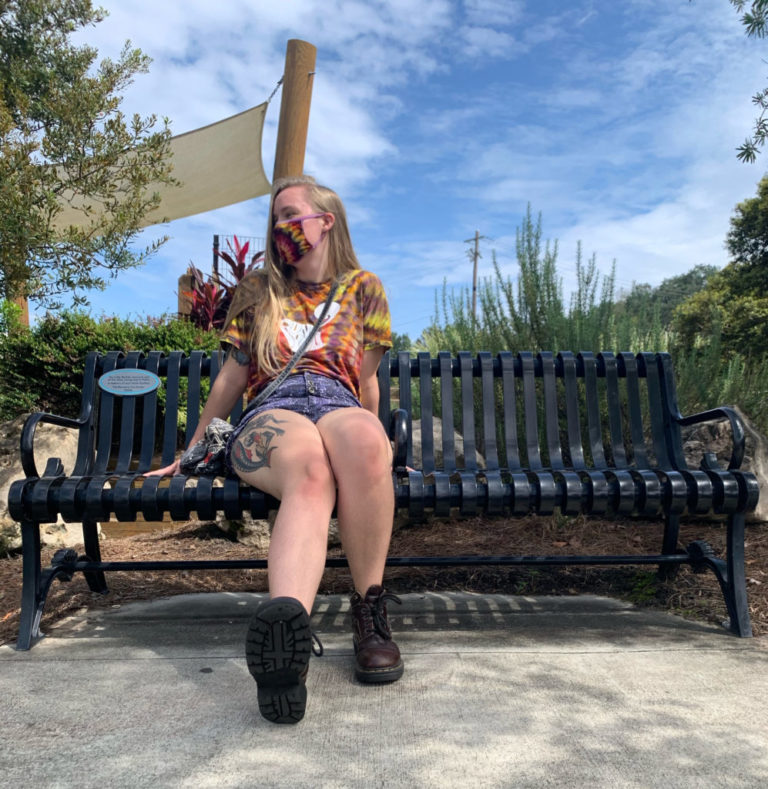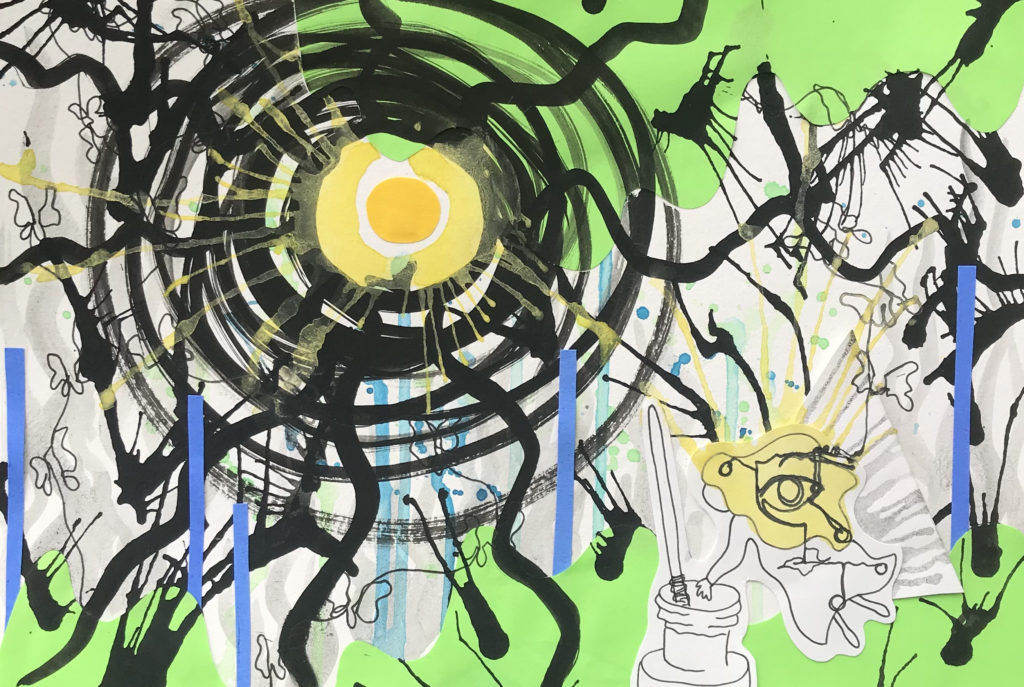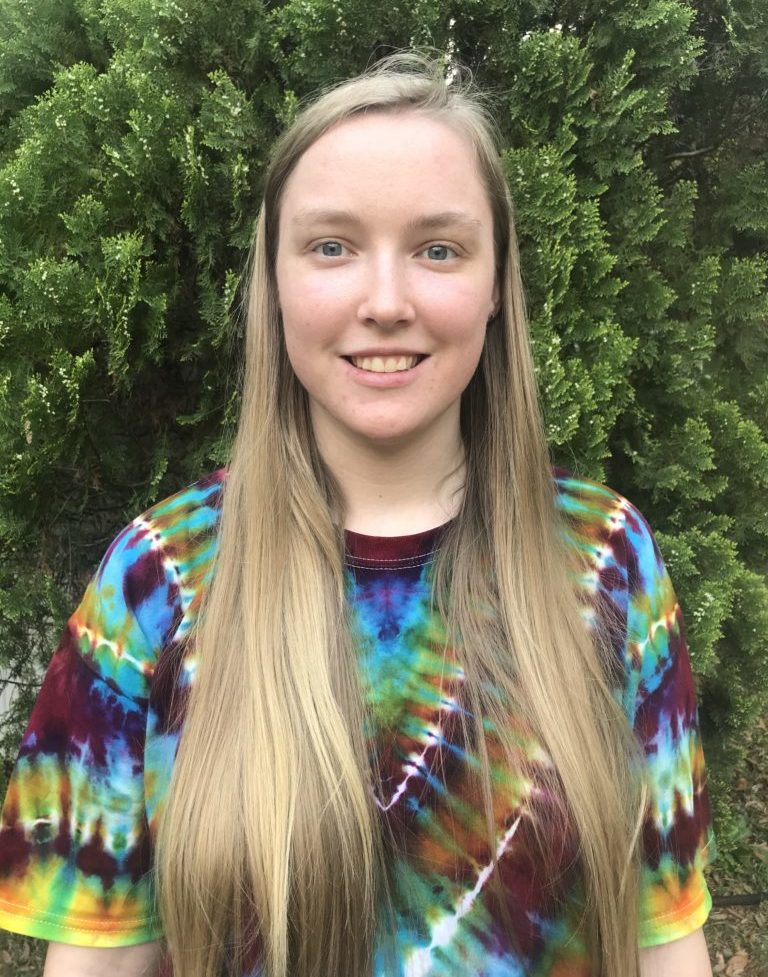my life goal is constant art
through personal art and in teaching art
Hello~
My name is Kyla Anderson (she/her) and I am a 23-year old artist and future art teacher. I was raised by two hippy artist parents who both encouraged me and my siblings to pursue art for as long as I can remember. That encouragement from a young age has given me a passion for all things art and I’ve been drawing and painting for as long as I could hold a paint brush. After all those years of art, I now have a bachelor’s degree in studio art and I am working towards a master’s degree in art education.


Art-making
A range of mediums and art forms
I tend to focus most on drawing, painting, and collage in my art-making, but I also love sculpting, photography, printmaking, sewing, and other forms. I have a personal goal to learn as many art forms and skills as I can so that I can use them in my art. I really want to learn welding, for example. I am always trying to discover new art and new art materials, and try new things with materials.
My art style is more whimsical most of the time, with surreal and abstract elements as well as representational elements. I just like to have fun with my art.
Art Teaching
Teach art for art and for life lessons
My parents raised me with stories of their own artistic experiences of learning about different cultures, communities, art movements, and art forms. They have taught me to treat people equally and with respect, to work together with others to learn from them and to make change, and to have fun and enjoy life through art. This was encouraged even further in my education at FSU, which has altogether made me want to be an art teacher to forward to my students of any age those values of respecting difference, promoting community and teamwork, and experimentation and play.
My own art style was created entirely through just having fun and experimenting in art, by collecting techniques, materials, and visual elements that I have learned and enjoyed over the years. Experimentation and play in art involves students experiencing new materials, techniques, and aspects of art in order to find what they personally enjoy using with their art, or what works best to express an idea or convey a message. This brings fun into the art classroom in a way that allows students to improve their art, and problem solve materials and ideas by finding what works and doesn’t work. There is no one way to make art, so I can’t tell students to create art a certain way, but I can give them the tools and opportunities to discover what they want their art to be. This can help them to find an art style from those discoveries and have more of a sense of self by finding a combination of elements that help them express their ideas, or even their whole identity. I plan to emphasize this experimentation by encouraging them to keep trying new things every day and push through difficulties until they can find a solution that fits their diverse needs.
With that understanding of diverse needs, I also want to encourage students to respect differences between themselves and others because those diverse needs are natural and our differences make us unique and beautiful. Respecting difference means striving to understand and accept others for who they are, and treating people with kindness and equality even if you don’t agree with each other. The first step of this is trying to understand each other’s identity and see things from their perspective with empathy. Critiques and shared self-reflections will allow this through students sharing their own identities and differences, which will then allow peers to see things from the sharer’s view and give feedback specific to that student’s goals. Difference and respect can be further taught by exposing students to a diversity of cultures, artists, art forms, and art messages through which students can discuss and understand the differences in the world. Those discussions will also expose students to the different ideas that can come from art and how there is usually more than one approach. More respect and discussions allowing for a range of approaches could eventually help the world to become a kinder place where people can work together.
Community and teamwork stem from this respecting difference by understanding the individual and common needs of people within a group and trying to work together to meet those needs. Working together in groups or partnerships like that allows students to learn from each other by sharing and discussing each group member’s unique ideas, knowledge, experience, skills, and style. Discussions and teamwork even helped me to open up more and become confident in my ability to contribute, so I want to include projects that allow students to feel important. I plan to include class art critiques for such teamwork and discussions because the class becomes focused on working together to agree on the meaning of an artwork, to give feedback that will help each of their classmates to improve their art, or to just share ideas to inspire. I’d like to even bring community projects into the classroom, so students can experience teamwork for a goal that they feel is important to the real world. This can help students become better adults too that will want to help their own communities and make the world better.
I intend to prioritize these values to encourage students to learn about and accept differences in art and the world, create art that expresses their identity and ideas, work together, and experiment and problem solve, all of which will help them to think critically about their art and the concepts and differences they encounter. I hope that students will take what they learn in my class and become kinder, more accepting people that will promote a world where more people work together to make the world better through art, and enjoy doing it.
